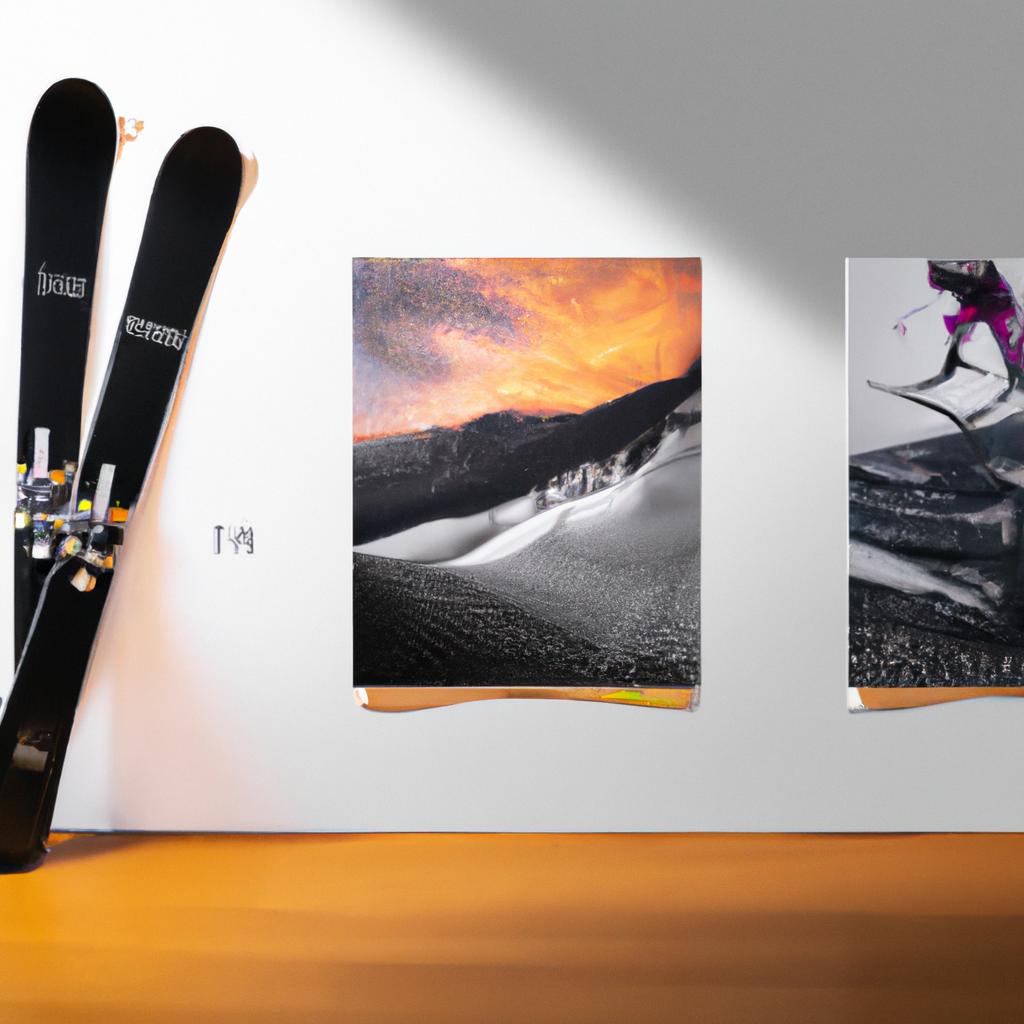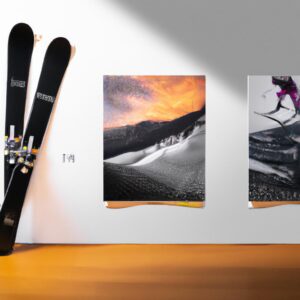Introduction to Skiing in Different Seasons
Skiing is a popular activity for both recreational and competitive athletes, enjoyed by people of all ages. While many people associate skiing with winter, this incredible sport can actually be enjoyed all year round! In this guide, we will explore the different seasons you can ski in—winter, summer, fall, and spring—and discuss the pros and cons of each season.
By understanding the various advantages and disadvantages of skiing in different seasons, you can maximize your ski experience by taking advantage of off-peak opportunities. Say goodbye to fighting the winter crowds and exploring the unique experiences that the four seasons have to offer!
Winter Skiing Season
Winter skiing season is the ideal season for skiing with plenty of cold temperatures and plenty of snow. The winter season usually starts in late November, peaks at the beginning of February and finishes sometime in April. During this time, most ski resorts will have a good selection of skiing terrain to explore, so skiers can find a spot that suits their skill level and preference.
The advantages of skiing during the winter season include colder temperatures, which means less snow melt and more consistent snow conditions. For those looking to take on more challenging terrain, the colder temperatures make it easier to navigate icy trails. Additionally, the resort crowds are lower during the winter compared to other seasons, giving skiers more space to enjoy the slopes.
Unfortunately, due to the colder temperatures the snow can become harder and more difficult to ski on. This can be dangerous as it increases the risk of injury when taking on higher-level terrain. Additionally, the days are shorter and the sun sets earlier, giving skiers fewer hours in the day to take advantage of the slopes.
Advantages and Disadvantages of Winter Skiing
Winter ski season is typically thought of to be the best time of year for skiing due to the cold temperatures and snow depths. Although, it may have some advantages as well as disadvantages that someone should be aware of before embarking on a winter skiing adventure.
Advantages of Winter Skiing
- Snow depths are usually at their highest during the winter months.
- Less likely to have disruptions from bad weather.
- Many ski resorts offer discounts during low season.
- Chances to take advantage of promotions and holiday packages.
Disadvantages of Winter Skiing
- The temperature can be frigid and not suitable for some.
- Higher demand for certain times may mean higher prices.
- Ski lifts may experience more congestion due to more people in the mountains.
- Risk of avalanche or dangerous conditions due to potential snow storms.
Summer Skiing Season
Skiing in the summer season can provide a completely different experience to that of skiing in the winter season. With warmer temperatures, less snow, and longer days, summer skiing can provide new opportunities for exploration and adventure.
The advantages of skiing in the summer include warmer weather and no need for bulky ski clothing or balaclavas. Skiers get more sun exposure, allowing them to tan their skin and make the most of the warmer temperatures. Most importantly, the longer hours mean skiers can spend more time on the slopes, and enjoy the sport as it was intended.
The disadvantages of summer skiing include fewer options for skiing due to the melted snow and lack of mountainside grooming. This means that there are fewer runs available, and thus a lack of terrain to explore. Additionally, the risk of injury is increased due to the hardened landscape, and the snowpack is much more inconsistent. For these reasons, summer skiing is more suited to intermediate or advanced riders.
This season does bring with it many other benefits though, such as seasonal events, races, and festivals. Skiers can take advantage of these unique opportunities to meet other skiers, learn from experts, and even win prizes. There is also the opportunity to get involved with mountain biking, hiking, camping, and other outdoor activities.
Advantages and Disadvantages of Summer Skiing
Skiing during the summer months can be an exciting and beneficial experience, but it is important to understand both the advantages and disadvantages to this activity before you head out and hit the slopes.
The main advantage to skiing during the summer is that most of the snow has melted and the conditions are more conducive to skiing. You can avoid the harsh winter weather, and enjoy warmer temperatures, longer days, and fewer crowds. Summer skiing also provides a great opportunity to get some fresh air, take in some beautiful scenery, and enjoy some quality time with friends or family.
On the other hand, there are some potential drawbacks to summer skiing. The snow may not be as high-quality as what you find in the winter months, so your ski experience may be dampened somewhat. And because summer skiing requires more man-made snow, it often comes with the added cost of renting special equipment or buying a lift ticket. Finally, the days are shorter, so you don’t have quite as much time to enjoy the slopes.
Overall, skiing during the summer months can be a great experience, but it is important to understand both the advantages and disadvantages before you make your plans.
Fall & Spring Skiing Seasons
Skiing in the fall and spring months can be a great way to enjoy the outdoors without dealing with extreme temperatures or high prices. There are several advantages to skiing during the shoulder seasons; however, there are also a few drawbacks.
Advantages and Disadvantages of Fall & Spring Skiing
Advantages
- Lower Prices: Many resorts offer significant discounts during the shoulder seasons.
- Fewer Crowds: It’s much easier to find a good spot on the slopes when there isn’t a big crowd of people.
- Milder Temperatures: Skiing in temperatures that are too hot or too cold can be very uncomfortable. During the shoulder seasons, the temperatures are much milder.
Disadvantages
- Inconsistent Conditions: The weather can be unpredictable during the shoulder seasons. This can make the snow conditions unreliable.
- Limited Hours: Many resorts reduce their hours or stop operating altogether during the shoulder seasons.
Skiing in the fall and spring months offers an opportunity for skiers to have an enjoyable experience while avoiding harsh temperatures and the crowds that come with winter skiing. However, it’s important to keep in mind that the conditions can be unpredictable and some resorts reduce their hours or close outright during these times.
Advantages and Disadvantages of Fall & Spring Skiing
Fall and spring skiing offer a unique opportunity for skiers who want to try something different. The temperatures are milder and the snow is often softer, making skiing more comfortable. But there are some caveats as well.
The biggest advantage of fall and spring skiing is the opportunity to ski in more comfortable conditions. The temperatures are usually milder than they are in winter, and there is less wind, making skiing more pleasant. And while there may not be as much snow, the weather is also usually more consistent, so you’ll get fewer surprises on the slopes.
On the downside, the snow can be softer and more difficult to ski on, and there may be fewer runs open due to the reduced snowfall. Additionally, cheaper services and cheaper packages may be hard to find during these times as they are not highly sought after.
- Milder temperatures and less wind
- More consistent weather
- Softer snow
- Fewer runs due to reduced snowfall
- Harder to find cheaper packages
Tips for Year-Round Skiing
Skiing year round can be an exhilarating experience and a great way to enjoy the outdoors. To make the most of your time on the slopes it’s important to plan ahead and be prepared for whatever the weather brings. Here are a few tips for making the most of skiing in different seasons:
- Research the weather conditions and plan accordingly. Different ski resorts around the world have different climates, so make sure you know what to expect.
- Make sure you have the right gear for each season. The temperatures and wetness levels vary throughout the year, so having the right clothing and equipment is key to staying safe and comfortable.
- Be aware of the impact of the changing seasons on the snow conditions. The type of snow changes from dry powder in winter to slushier, wetter snow in other seasons.
- Know the best times to go. Summer skiing has its advantages, as there tend to be fewer people on the slopes and you can find cheaper deals on accommodation. Similarly, skiing in the off-season can also offer fantastic deals and more time to practice on the slopes.
By following these tips you’ll be able to make the most of skiing in different seasons and enjoy the great outdoors all year round.
Conclusion
Skiing in different seasons is not only possible, it can be a great experience. Skiing in the winter offers reliable snow, consistent temperatures and the most options for equipment. The spring and fall offer less crowded slopes and slopes with more varied conditions. Summer skiing is possible at some altitudes with the right combination of weather and terrain. Skiing off-peak and exploring different seasons can provide a unique experience and allow you to open up possibilities that weren’t available before. Be sure to use the proper equipment for different seasons and take the time to learn about the ski conditions before heading out.
comments: 0

